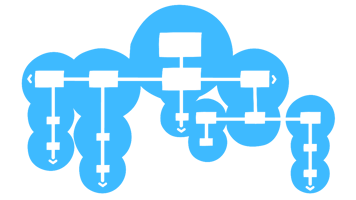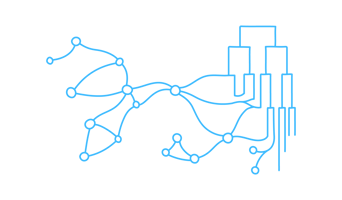It’s well known that Holacracy represents an advancement of an earlier organization model for self-managing organizations called Sociocracy.
A 2006 article by Brian Robertson*, founder of HolacracyOne, the firm that holds the Holacracy trademark, sheds light on those intellectual roots and the key sociocratic features that attracted Robertson to this model.
In his article “The Sociocratic Method”, Robertson writes that he implemented Sociocracy at his company Ternary Software because “sociocracy harnesses self-organization to provide organizational agility and a voice in governance to all participants”. He goes on to highlight some features of Sociocracy, introduced as “four primary practices”, which will sound familiar to anyone who’s worked with either Sociocracy or Holacracy:
-
Decision Making by Consent, meaning that “decisions are made only when no one involved knows of a significant argument against the decision”. A process is defined to ensure that “each reasoned argument is included in the discussion”. Policies can be defined and decided upon by consent that grants “autocratic authority” to certain roles for a certain domain within a certain scope. The example given is the office manager, who has the absolute authority to make decisions relating to office management.
-
Circle Organization, meaning that “the organization’s hierarchy is made up of semiautonomous circles”, the sociocratic term for teams (note that the model is not “without hierarchy”, but that the hierarchy is not configured as a top-down, single-boss, chain-of-command model). The circles are semi-autonomous because “the needs of its higher-level circles and lower-level circles must be taken into account.” At the highest level of the organization there is a “Top Circle”, which is described as being “similar to a traditional board of directors”. Robertson says that in this Top Circle “each member represents a distinct interest: One represents the workers, another the investors, a third the industry, and a fourth Ternary’s social purpose, which is largely to spread the sociocratic model”.
-
Double-Linking, meaning that in each circle “one person is elected by the lower-level circle and one (who has overall accountability for the lower-level circle’s results) is chosen by the higher-level circle”. Note that this operationalizes an element of top-down hierarchy into the model (in Holacracy the representation from the higher-level circle is called “Lead Link”).
-
Elections by Consent, define a detailed process for nominating, discussing, and electing individuals to roles.
All of these elements were eventually absorbed and partly advanced in Holacracy.
One more original thought from the article is the ultimate goal Robertson cites for why he sought an alternative to traditional forms of organizing and finally ending up with Sociocracy. Sure, he references functional advantages of the model versus traditional, chain-of-command hierarchies (e.g. a better use of human resources and knowledge dispersed in the organization etc.). Yet he begins his article with a reference to globalization and the value of cross-enterprise cooperation:
“Business is the first truly global social organization. It crosses geopolitical and ethnic boundaries and has the potential to be a uniting force in the world, inspiring deep levels of cooperation among enterprises of all types. Yet our current corporate governance models dictate against this: They push companies toward unhealthy autonomy.”
He ends his article by again emphasizing the value of sociocracy for his company, but also picking up on his introductory thought on cross-company collaboration:
“Sociocracy has been extremely beneficial for us at Ternary. We’re one of the fastest-growing companies in Philadelphia .... We could never have achieved this under a traditional management system. We plan to find or create other companies ready to adopt our governance model, in hopes of creating a sociocratic collective that would make it easier for our organizations to do business with one another.”
As far as I can see, this particular idea of a “sociocratic collective” and the growth of global cross-company collaboration as the ultimate reason to disseminate the model is missing, or at least hasn’t been dominant, in the ensuing development and discussion of Holacracy.
Explore organizational innovation with Management Kits
References
* Brian Robertson, “The Sociocratic Method”, in: strategy+business, Issue 44, Autumn 2006. Link.
Note: the article appeared in strategy+business, a business magazine focused on management issues and corporate strategy, which, at that time, was published by Booz Allen Hamilton, a consultancy firm. It was later published by Booz & Company, my employer from 2008 to 2013, which separated from Booz Allen Hamilton in 2008 and contained the international commercial consulting business.



